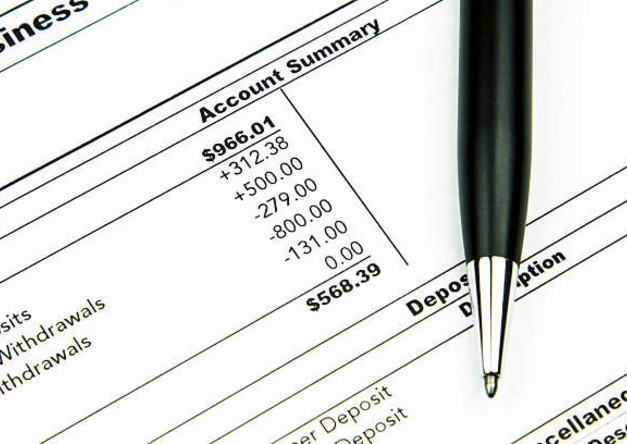What Does a Garnishment Look Like on a Pay Stub? A Complete Overview
By Davis Clarkson , February 18 2025

Imagine you go through your pay stub and find an unknown deduction. Of course, it doesn't sound ideal. That's why you should know “What does a garnishment look like on a pay stub?”. We'll give you a precise idea of what garnishments look like on pay stubs and everything else to know.
What Is a Wage Garnishment?
A wage garnishment is an official order that your employer takes from your paycheck to pay a creditor what you owe. These include deductions that are court-ordered or mandated by the government. They are featured on the pay stub to give employees real-time updates on deductions made towards unpaid loans.
What Does a Garnishment Look Like on a Pay Stub?
On the pay stub, garnishments are normally located in the deduction part. This is the same part containing normal items like taxes and insurance contributions. However, it's unlike other voluntary deductions. Deductions like retirement savings amount or health insurance amount. Garnishments are compulsory and include an indication of their purpose in the name. Often, these entries may appear in the “Other Deductions” section or in a general section for garnishments.
The information to be presented about garnishment differs from one employer and payroll to another. But it normally contains the amount withheld for the current period. Some employers may show the total of garnishment payments you make. This will be useful in determining how far you've gone with paying the underlying obligation. This makes it possible for both you and your creditors to keep track of the repayment process easily.
Most pay stub garnishment entries carry some code or reference number. The number connects it to the original garnishment order. It assists the employers and processors of the payroll to keep tabs on garnishments and direct the right payments.
Common Types of Garnishment Entries
Various types of garnishment come with different tags on your pay stub to indicate the reason for garnishment. You need this to know “What does a garnishment look like on a pay stub?”.
Child support garnishments may appear as CHLD SUP or CS Garnishment. Tax Withholding may appear as IRS LEVY or STATE TAX LEVY. Student loan garnishments show up as “ED GARNISHMENT” or ”STUDENT LOAN”. General creditor garnishments may be the name of the creditor or ”WAGE GARN.”
All types of garnishments are used for different purposes. They may vary with respect to priorities and the maximum amount to be deducted. Knowing the differentiation, you are in a better position to decode your pay stub entries.
Legal Framework and Protection
Federal and state laws set important rights for employees affected by wage garnishments. The Consumer Credit Protection Act of 1968 has a Title III that protects employees. It states maximum garnishment amounts and employment security protections. Your pay stub has to disclose that you do not violate the legal restraints on garnishments. The garnishments should also not surpass certain bounds proportional to your disposable income.
The most basic idea used in setting maximum allowable garnishments is the concept of “disposable earnings”. This is your earnings minus legally acceptable deductions. Most kinds of consumer debts cannot be more than one-quarter of disposable income. Child support withholding can range from 50 to 65 percent depending on some factors. Also, federal student loan garnishments are normally set not to exceed 15 percent of disposable income.
Notification Process and Requirements
The process is beyond knowing “What does a garnishment look like on a pay stub?”. The legal way is that you should receive proper notification of garnishments before they show up on your pay stub. Private credit holders must go for court orders and give notices of the impending garnishments. Government entities for the tax and other official collections do so in predetermined procedures.
Your employer has an active role in this process. Most of the time, they are legally bound to notify you once they receive garnishment directives. It eliminates unexpected charges. It also offers an opportunity to challenge some calculations leading to loss of wages.
Financial Impact and Calculations
This is why you should know “What does a garnishment look like on a pay stub?”. The effects of garnishments on the amount of money that an employee takes home can be understood by being keen on the calculations. Pay stubs will show gross wages, and then list more easily recognizable things, such as taxes and insurance. Then, it will list the garnishment amounts towards the bottom and end with net pay. It assists in tracking the effects of garnishments on your total remuneration.
Some of these calculation procedures are particular to types of garnishments and jurisdictions. However, all of them should abide by rules stated by federal and state laws. In the garnishments, some are established as constant values. Others are computed as the percentage of disposable earnings. Hence, differing outcomes on different pay cycles.
The concept to be used in arriving at the calculation starts from gross pay at the end of each pay cycle. From this amount, federal and state taxes, social security, and Medicare are then deducted. Then, this comes up with disposable income. This disposable earnings figure forms the basis for calculating the maximum garnishment amount.
For instance, let your gross pay be $1000. If the required deductions are $200 then your disposable earning would be $800. For a standard consumer, garnishment is limited to 25%. This means the maximum allowed garnishment is $200. However, if you have child support garnishment which allows up to 50% of disposable earnings, this maximum could be $400.
Managing Multiple Garnishments
The answer to “What does a garnishment look like on a pay stub?” is different here. Multiple garnishments complicate your pay stub as different deductions are grouped into categories. They are grouped as per the amount garnished. Priority rules explain how to pay total garnishments if it would be unlawful to do both in a given state. Further, “child support” is given priority over other garnishments. Then, owed “tax levies” and at the last, “private creditors” claims.
When there are several garnishments, constant evaluation helps with the proper application of payments. It also ensures compliance with maximum withholding provisions. A pay stub should show the various ways the available cash is likely to be used to meet different garnishments.
Final Thoughts
In a nutshell, asking “What does a garnishment look like on a pay stub?” is valid. Understanding this enables you to handle these commitments prudently. And you can do this without compromising your employees’ rights. Pay stub entries need to be reviewed regularly and records kept. This helps you avoid the mishandling of garnishments and progress toward resolving underlying debts.
Need help managing cash payments and maintaining proper records? Our online pay stub creator offers simple, professional solutions for generating accurate pay stubs. Our easy-to-use tools help both employers and employees document their income correctly. We make tax season and financial planning smoother. Try our paystub generator today to ensure payroll is properly documented.Similar Articles
We’ve helped numerous individuals and businesses create professional documents! Create yours today!










